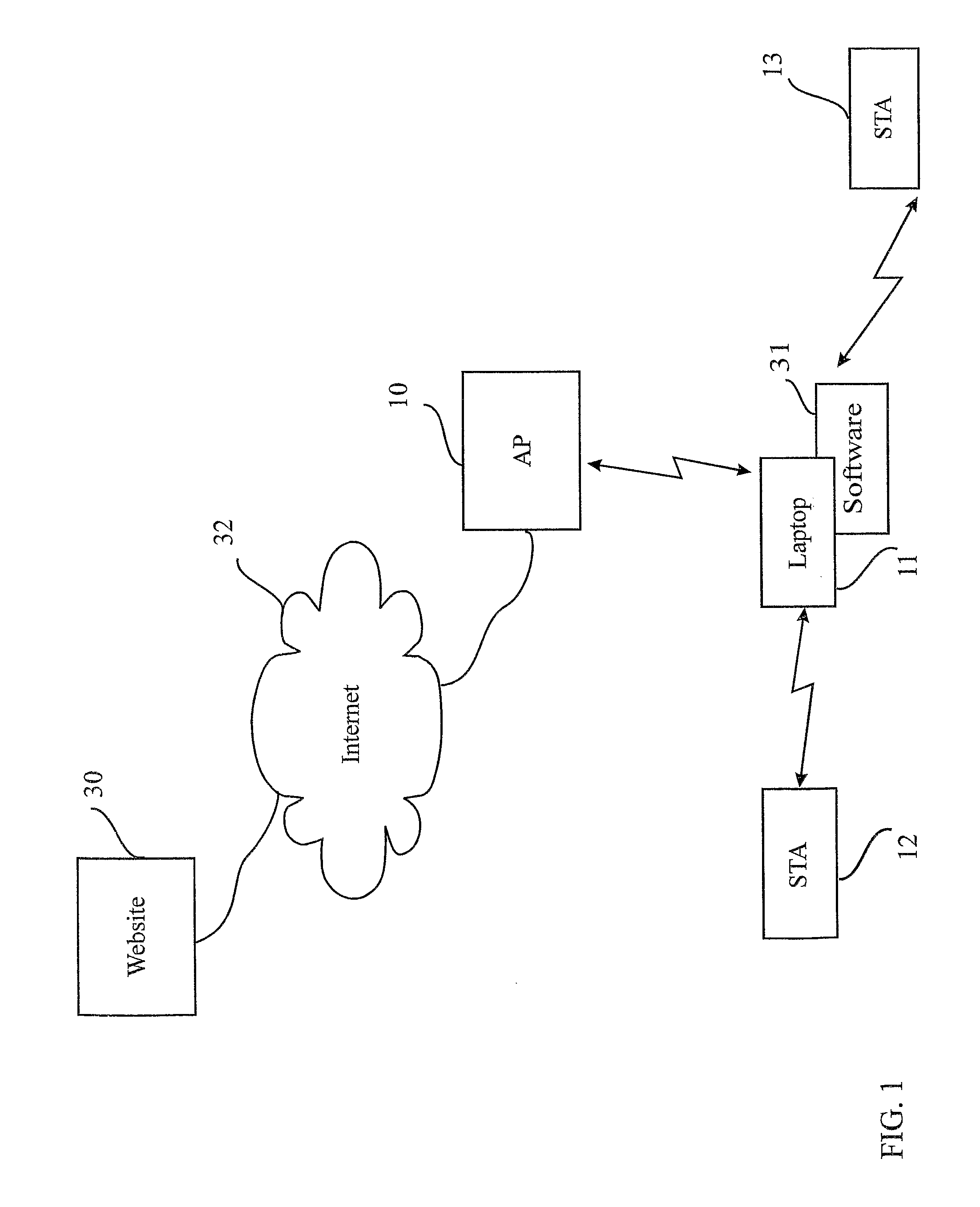Wireless internet system and method
a technology of wireless internet and wireless communication, applied in the field of wireless internet system and method, can solve the problems of large percentage of aps being locked and inaccessible, not allowing passing stas to utilize, and reducing the bandwidth of the network, so as to achieve the effect of greater bandwidth
- Summary
- Abstract
- Description
- Claims
- Application Information
AI Technical Summary
Benefits of technology
Problems solved by technology
Method used
Image
Examples
Embodiment Construction
[0139]A preferred embodiment of the present invention will now be described by way of example and with reference to the accompanying drawings.
[0140]Dual use Laptop Simultaneously Connected to the Internet and Serving as AP
[0141]FIGS. 1 and 2 illustrate a wireless system for connecting mobile devices to the Internet through an access point. It may use a novel method for performing the deployment of APs, i.e., the method that allows devices to function at the same time as STAs and as APs. For example, a laptop 11 is connected to the Internet through access point AP 10, and at the same time, laptop 11 shares its connection for other STAs by operating as an AP. Thus, other STAs 12 and 13 look at laptop 11 as an AP, and can connect through it to the Internet.
[0142]When laptop 11 is connected to AP 10 through a wired connection, it can simply set its wireless connection as an AP (Infrastructure mode). However, when laptop 11 is connected to AP 10 through a wireless connection, the situati...
PUM
 Login to View More
Login to View More Abstract
Description
Claims
Application Information
 Login to View More
Login to View More - R&D
- Intellectual Property
- Life Sciences
- Materials
- Tech Scout
- Unparalleled Data Quality
- Higher Quality Content
- 60% Fewer Hallucinations
Browse by: Latest US Patents, China's latest patents, Technical Efficacy Thesaurus, Application Domain, Technology Topic, Popular Technical Reports.
© 2025 PatSnap. All rights reserved.Legal|Privacy policy|Modern Slavery Act Transparency Statement|Sitemap|About US| Contact US: help@patsnap.com



